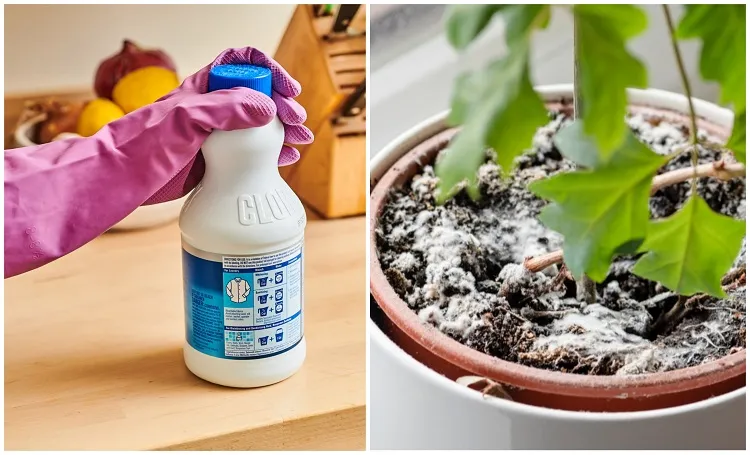Have you ever tried putting bleach on your plants? You may not know it, but it has an incredible effect.
If you are passionate about plants, you know very well that you have to take care of them to make them grow well . In fact, plants need good watering, adequate light, excellent ventilation and a natural fertilizer.
Also, for healthy plants, be sure to place the plants in a clean pot and place in a corner at room temperature. You must also regularly remove dry leaves and wilted flowers. Also do not neglect to fertilize the plants with a natural and light fertilizer. Finally, water the plants from time to time without soaking them with water.
However, you may not know that bleach can do a lot of good for your plants.
Using bleach on plants: yes, but how?
If you want beautiful and healthy plants for a long time, you can use bleach>. In fact, it is a disinfectant that can fight parasites and fungal diseases that can damage your plants . However, bleach is a very powerful product, so you need to use it carefully.
To apply it to plants, you need to apply it to leaves, petals and stems. For this purpose, take a solution diluted in water and apply it to the surface of the stems and petals using cotton balls. In reality, you have to insist on the stem as it is the part most attacked by parasites.
Then leave on the plant for at least an hour before rinsing with clean water. In this way it is possible to eliminate all parasites and prevent the spread of fungal diseases.
Finally, it is good to know that excessive use of this product can damage the plant. It is therefore necessary to follow the recommendations on the packaging to the letter and be careful.
What are the benefits of bleach for plants?
Bleach is very effective in preventing the growth of fungal diseases on plants. It can also neutralize mold and other pests harmful to plants.
Furthermore, it can be used to disinfect garden tools to prevent the transmission of diseases from one plant to another.
